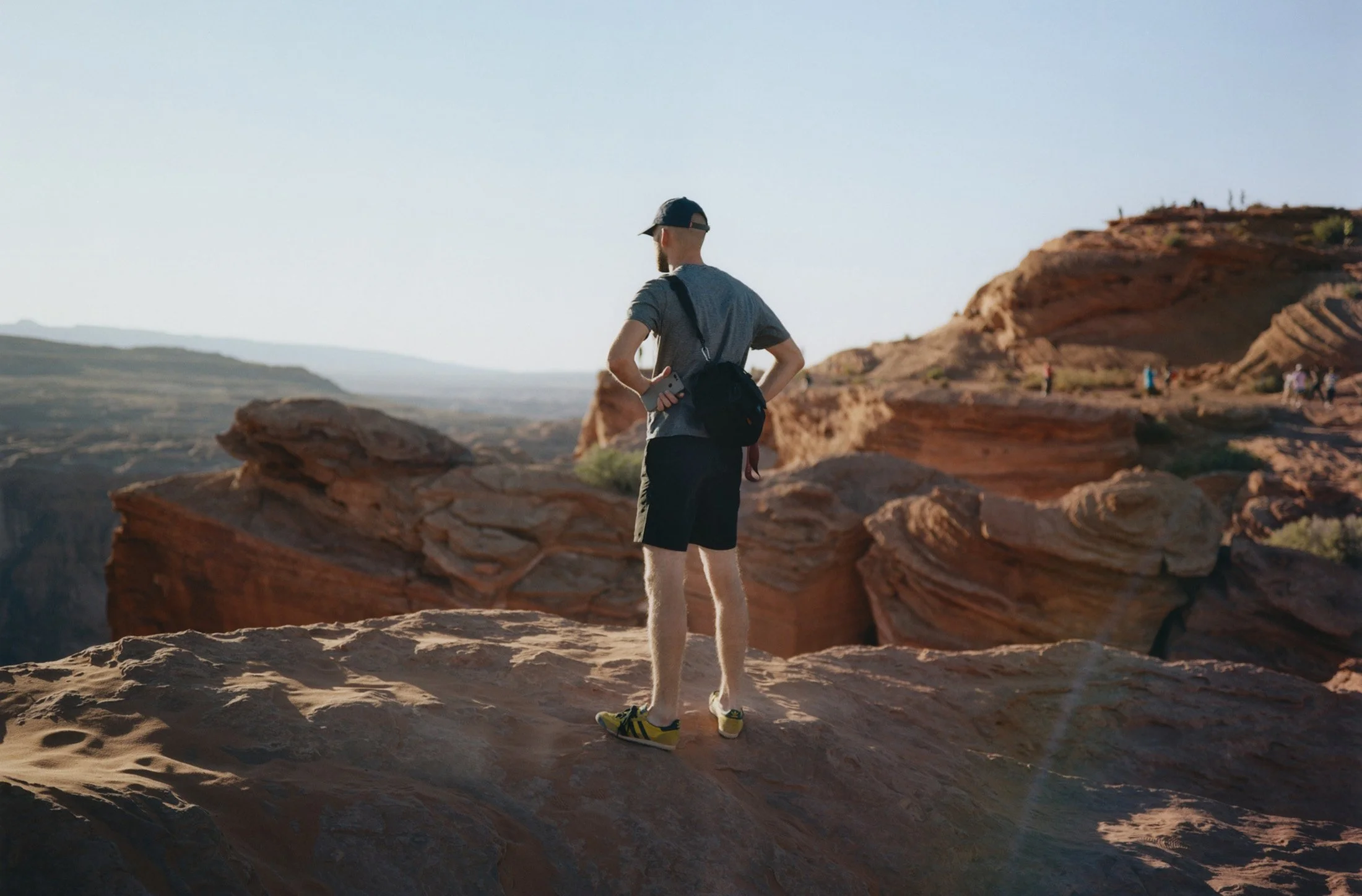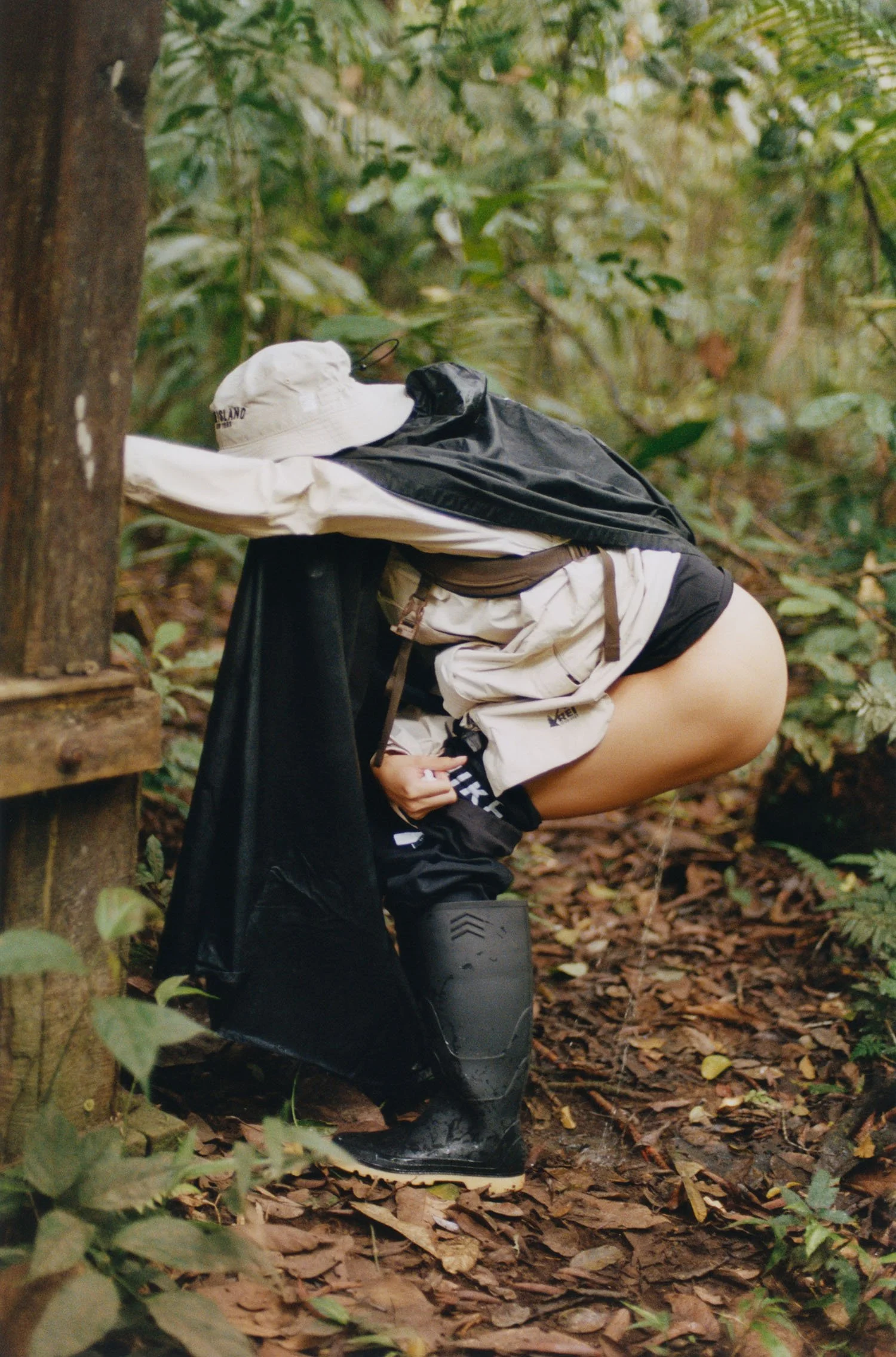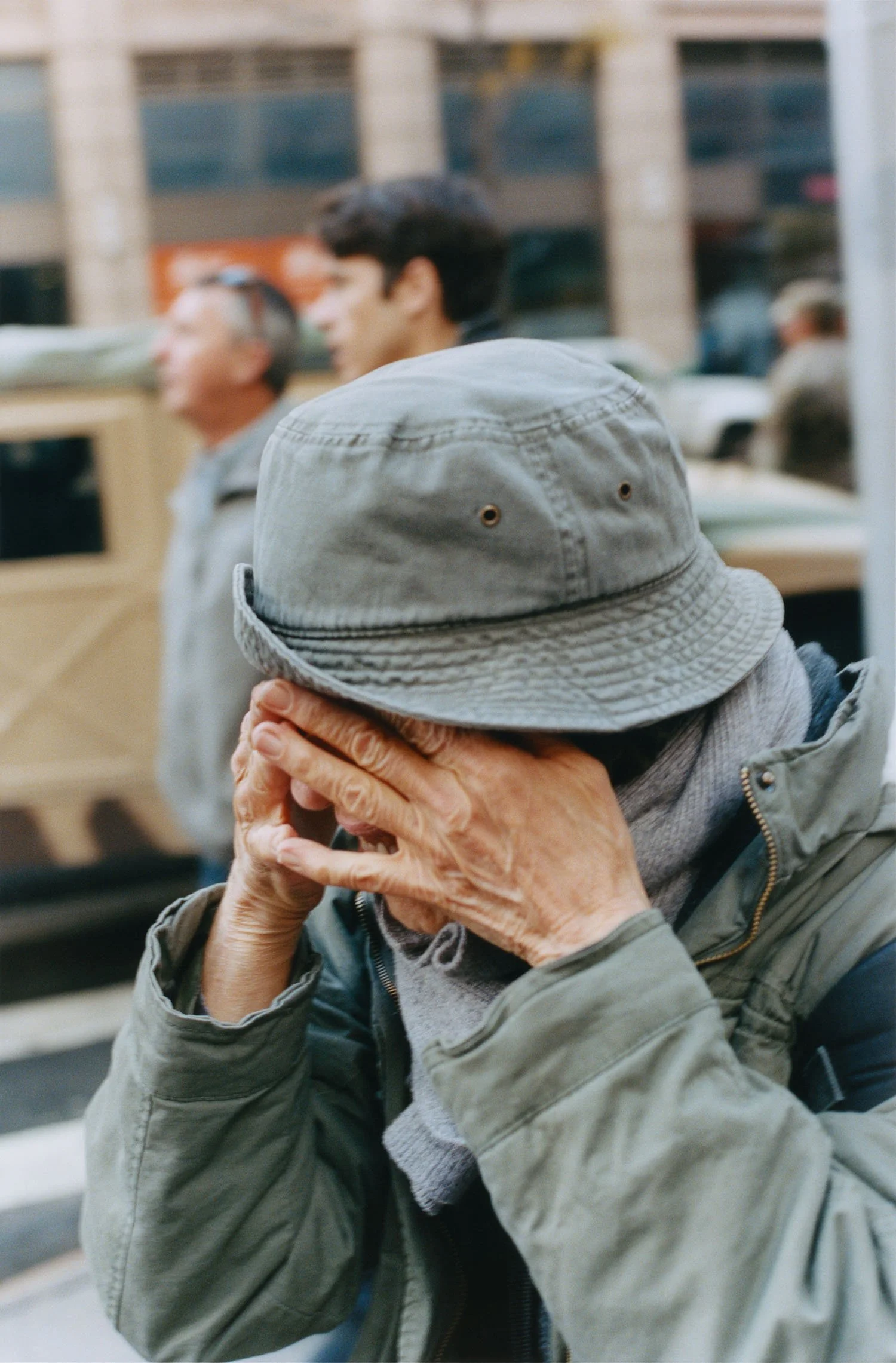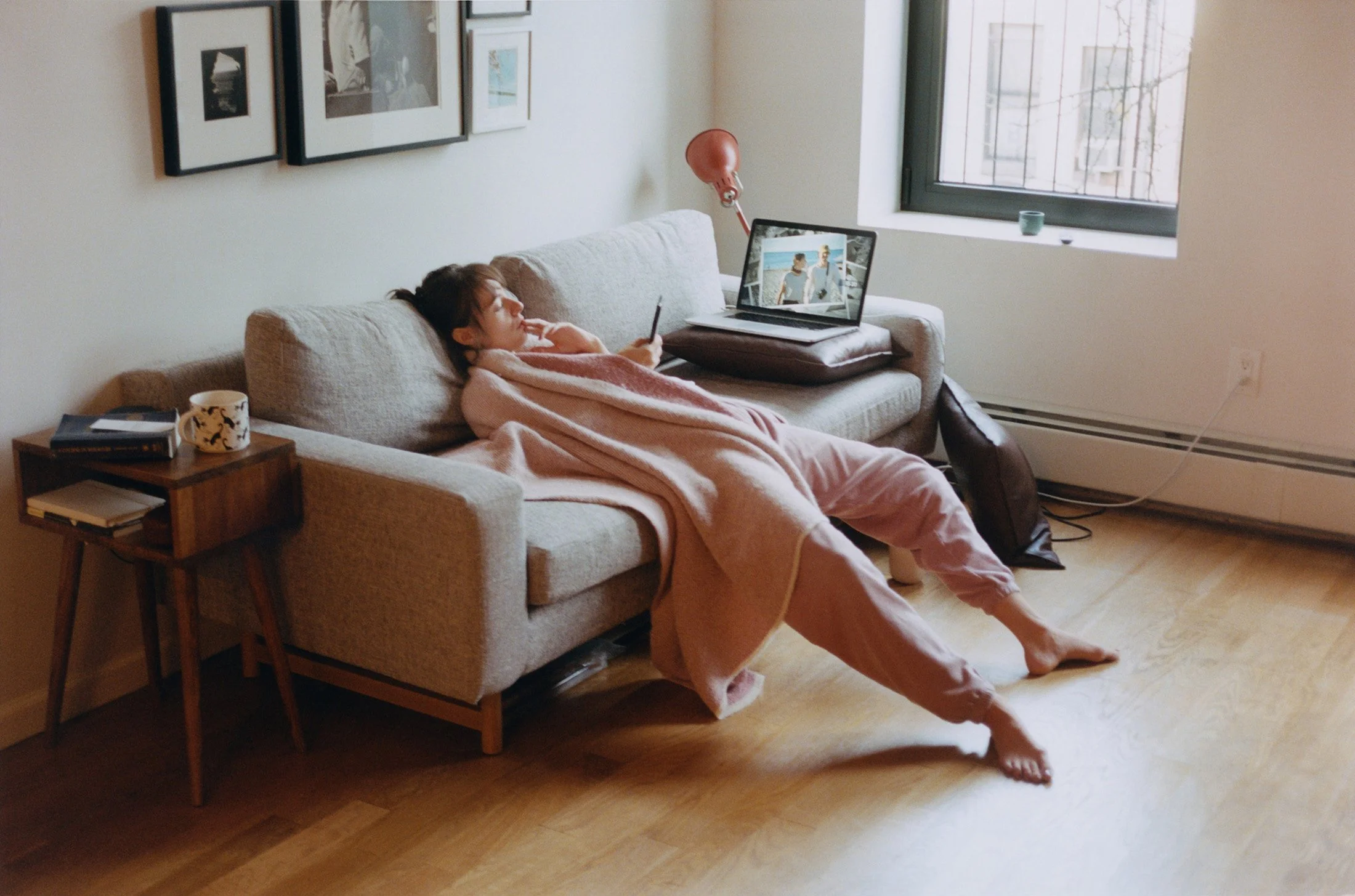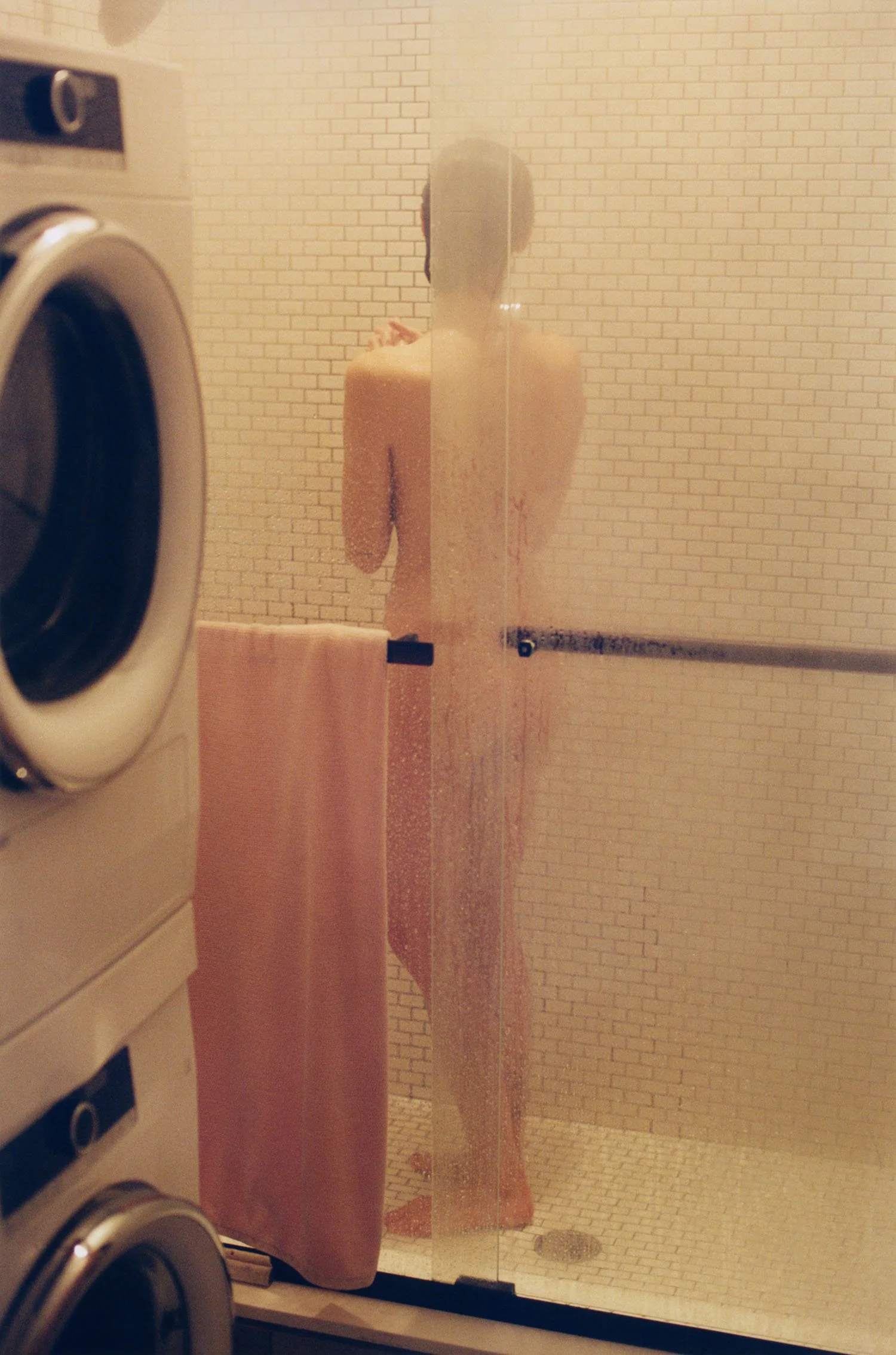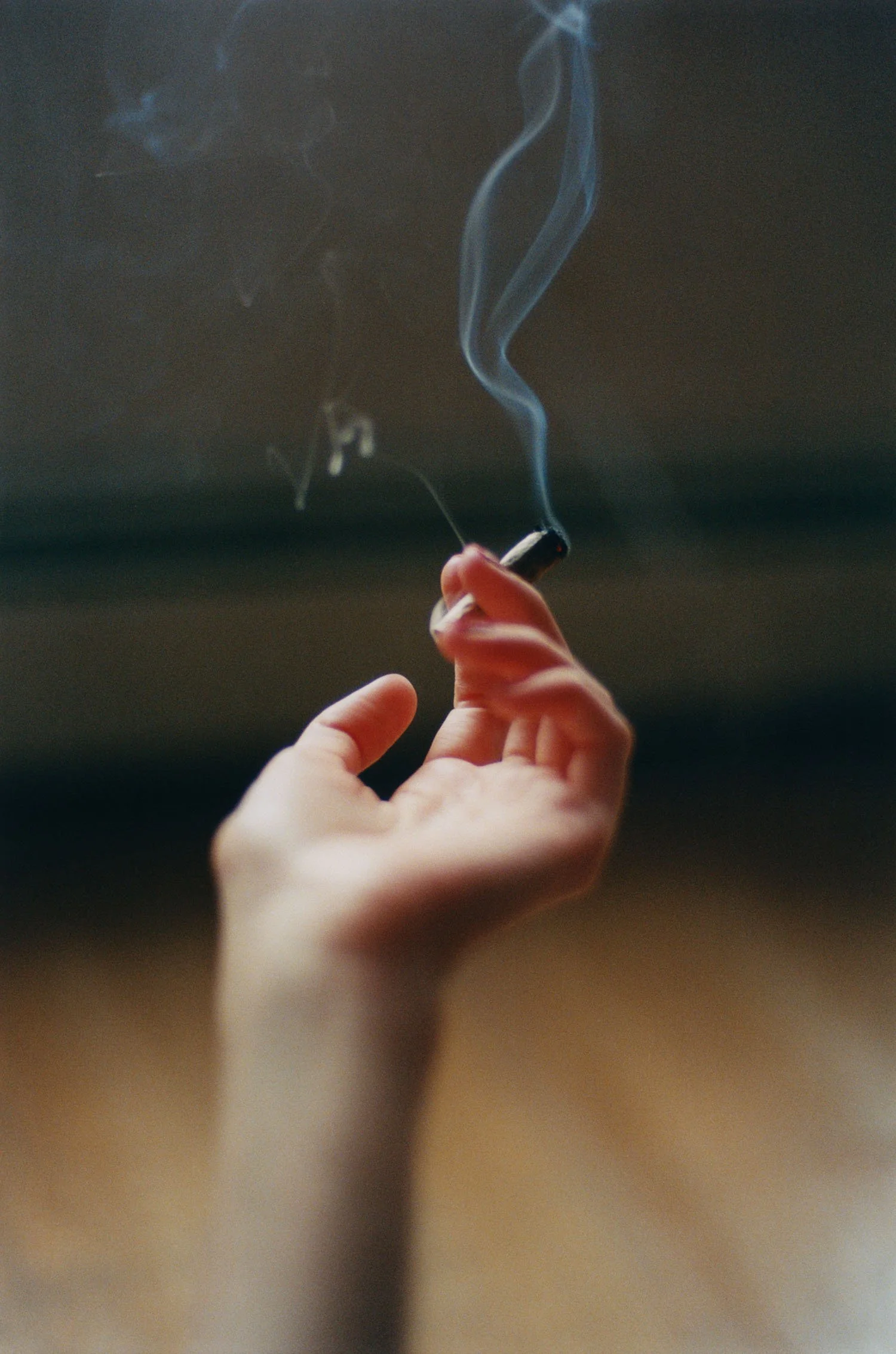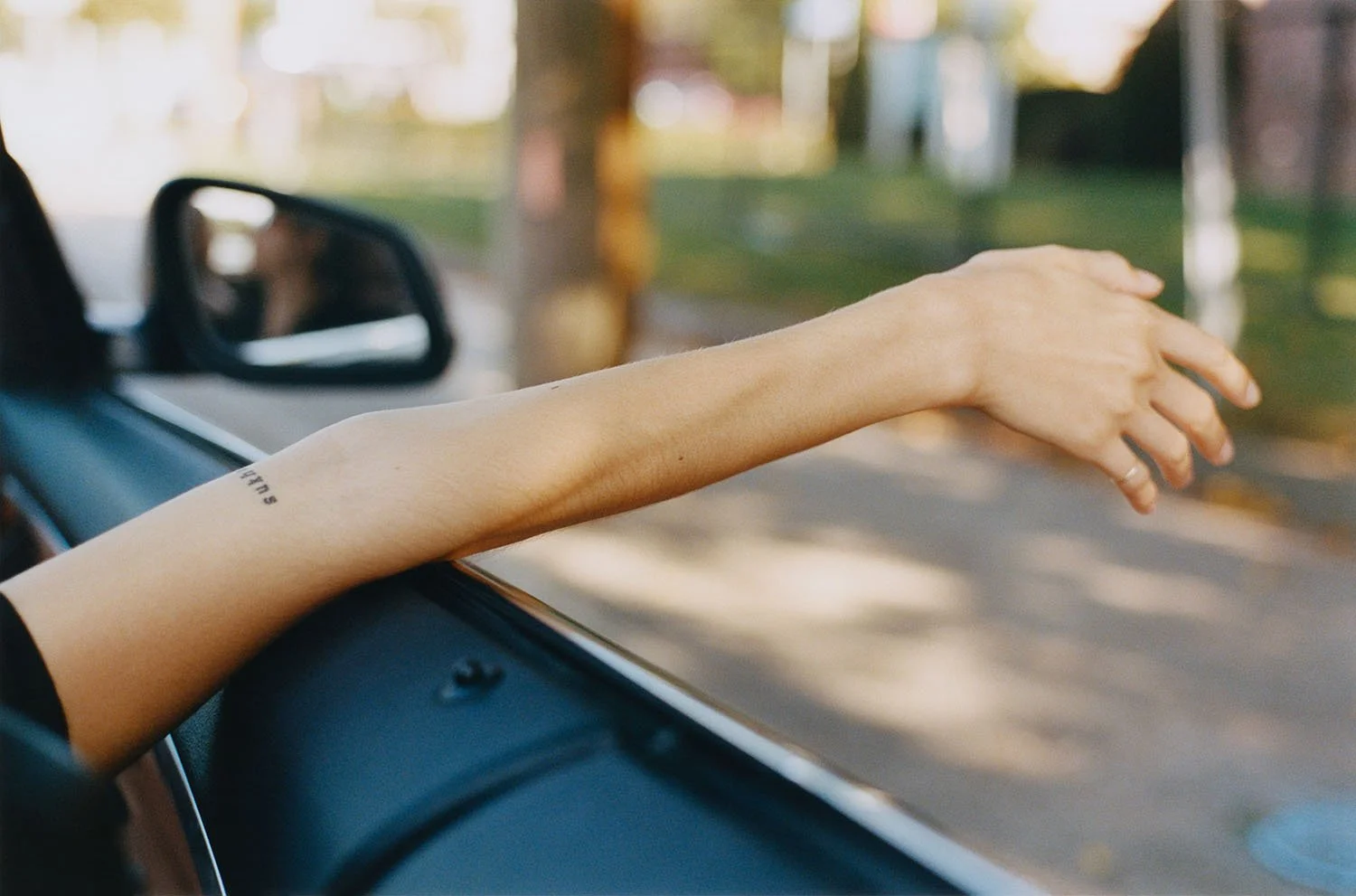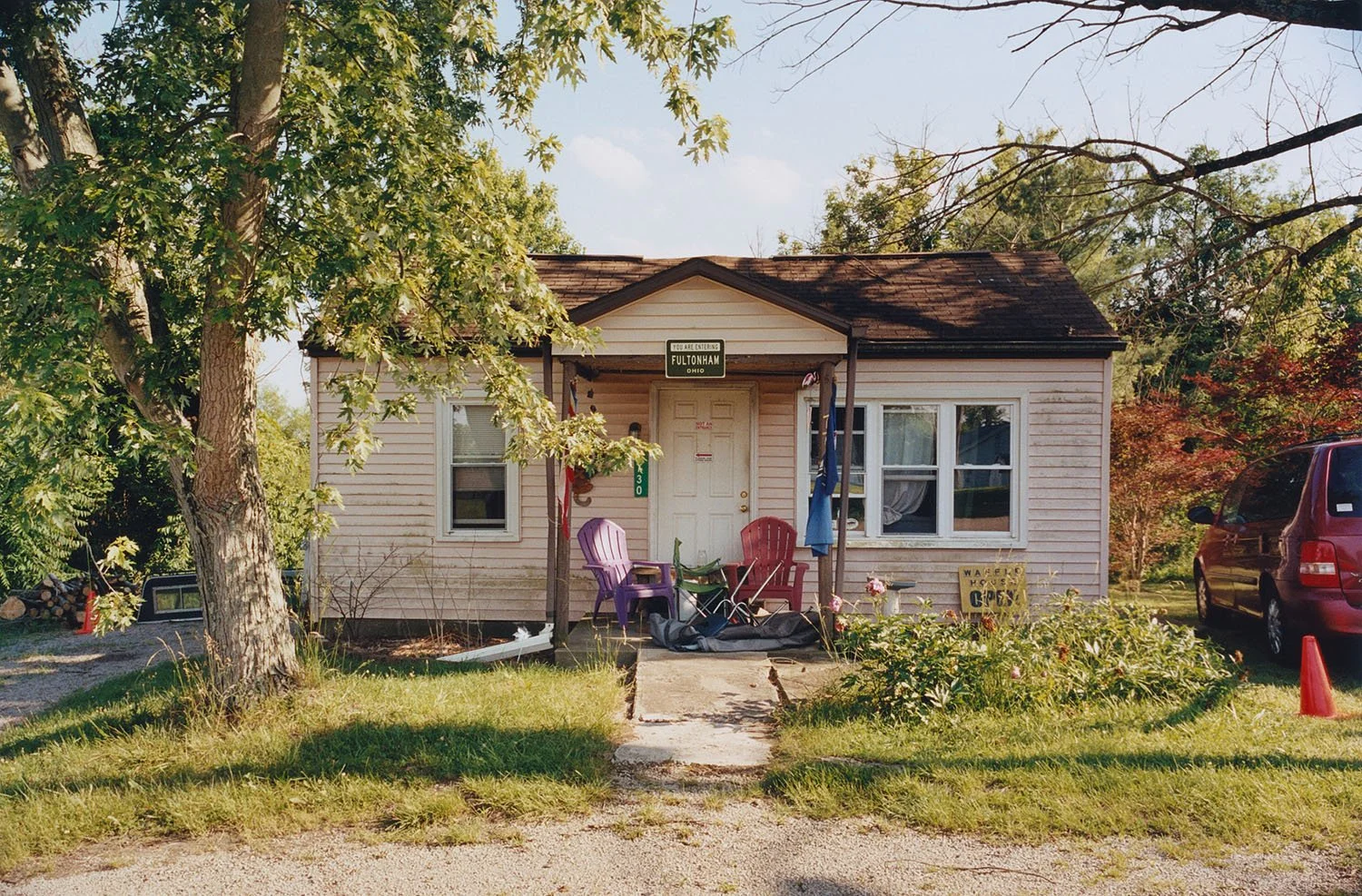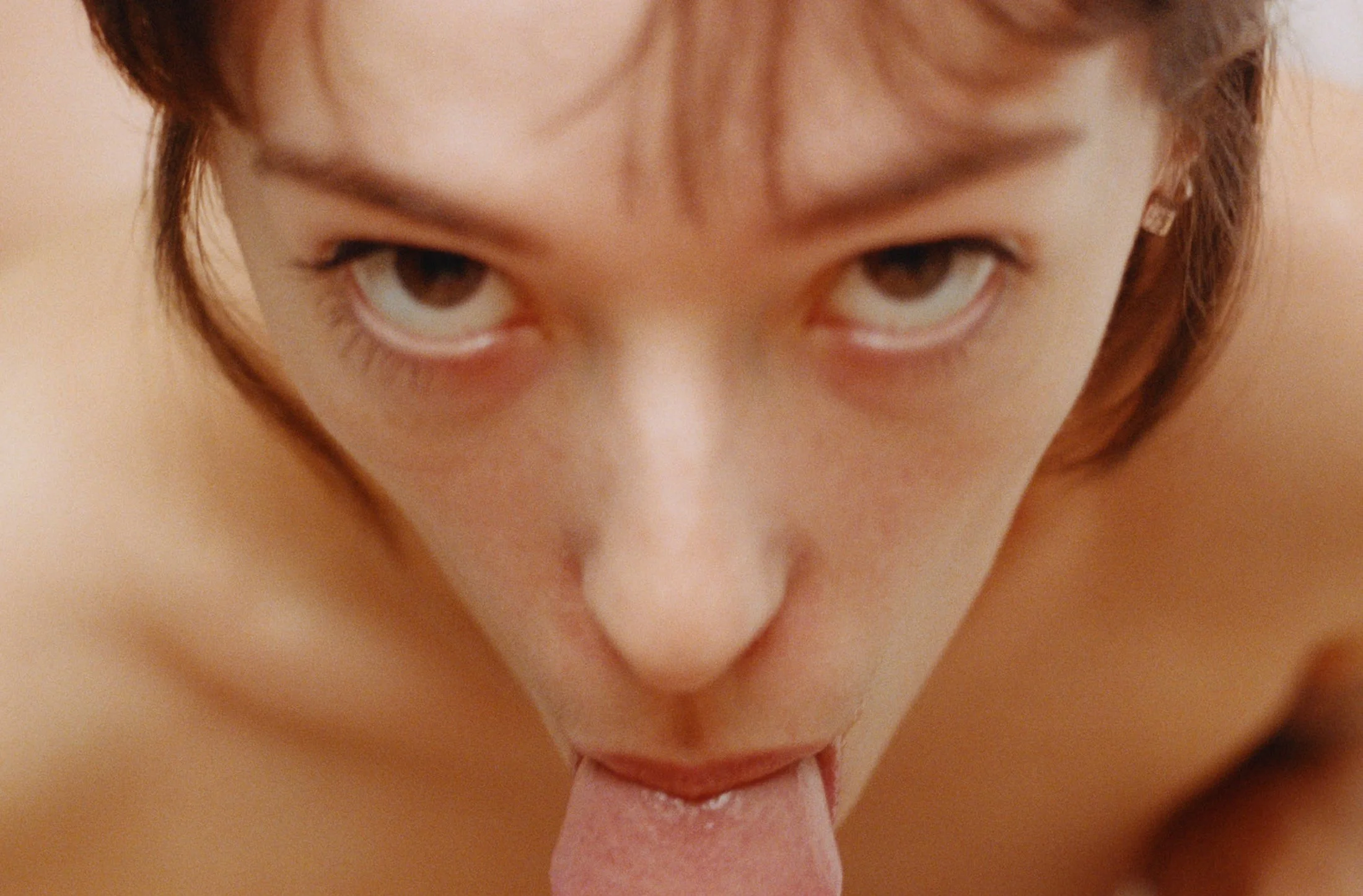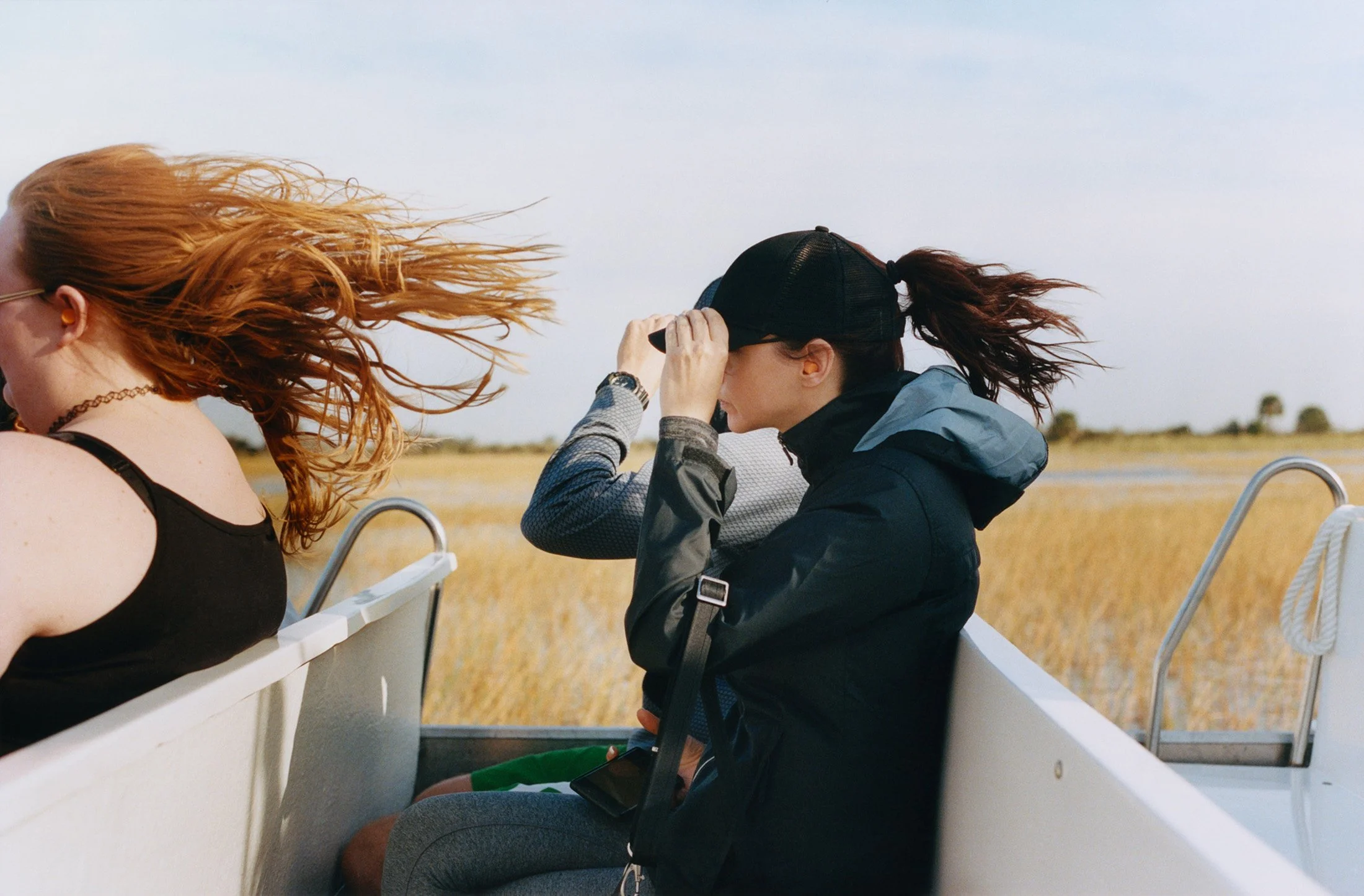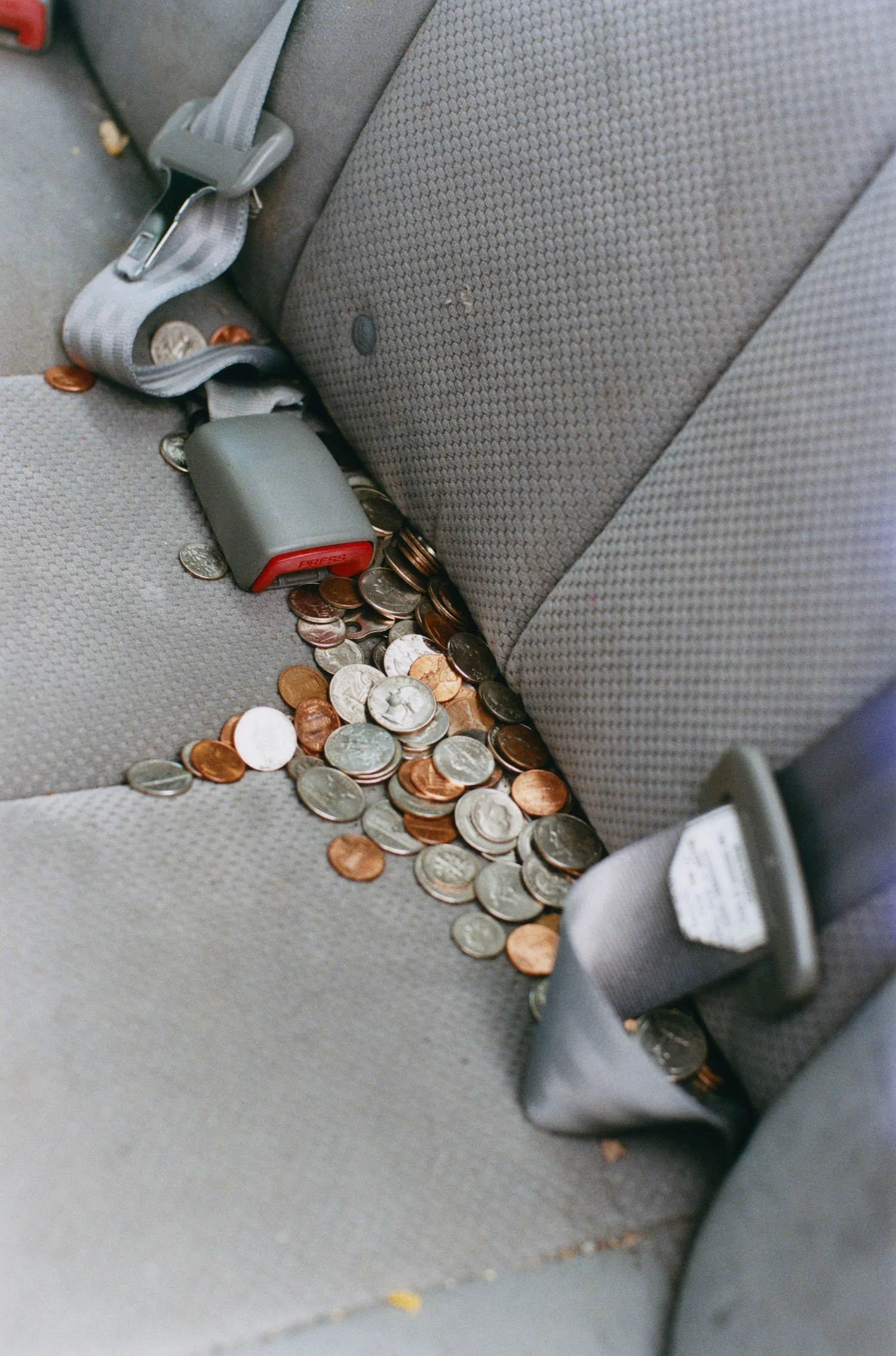Parallax View
What shapes and influences us as human beings, as subjects? How does the fleeting second, the view of the relation between a subject and an object, affect our interpretation? In his self-published photo book, Parallax View, Krisztián Éder approaches these questions by looking at the mundane moments and occurrences and the conscious or subconscious impact those might have
had on him. In his foreword, Krisztián points out a quote by Slavoj Žižek, in which he speaks about the parallax object and its connection to Lacan’s Objet Petit a. The shift in perspective allows a parallax view — a distinct interpretation of an object. The subject, in our case, exists inside and outside the image, raising questions about the perception of reality.
Parallax View enables to see objective reality through Éder’s gaze. Moreover, this view structures the subject, the character of the book, from whose prism we view reality. Krisztián speaks about the decisive moment and the interpretation of it, “We can never fulfill this desire because it's not a specific thing; it's the continual sense we have as humans, the feeling that something is lacking or missing from our lives, and the need to understand that.” In our conversation with Krisztián, we discuss the approach to creating a narrative to form a book. We speak about the desire to process life and a constant need of a human to fill in what is lacking. Krisztián explains his choice for the form of the book and the visuals that eventually build the story. Parallax View was presented in an exhibition at New Galerie in Paris.
Publication Details
Handmade, clothbound hardcover with linen bound.
Matte black foil stamp on front cover and spine.
Edition of 350
84 Pages
13,38 x 9,64 in
34 x 24,5 cm
Book Design by Atelier Franck Durand and Marin Muteaud
Photo-engraving by Mandarine
Printed in Paris by Picture Perfect
Get your copy at krisztianeder.com
‘Life is beautiful with all its charm and sorrow, and I intended to create a photo essay focusing on the mundane quality of these everyday moments.’
Parallax View
Hi Krisztián, congratulations on publishing Parallax View! Let’s discuss the process and the final selection of images that made it to the printed version. You decided to incorporate your work from 2017 to 2022 from different countries. The work portrays moments in the life of people, the stories untold, yet those that took place and you've been a witness to. Which elements were important for you to consider when working on the selection and design of the book?
I'm interested in the ordinary. That is where I draw all my inspiration. Life is beautiful with all its charm and sorrow, and I intended to create a photo essay focusing on the mundane quality of these everyday moments.
I liked hundreds of photographs in the rough selection after analyzing them. Still, during the editing process, I was trying to lean on my consciousness as much as possible, so when working on the selection, I didn't give myself time to make up narratives and ideas of the single photographs. I wasn't interested in where I took the picture or who was on it; It was more crucial that each image had a parallel impact on me.
Once I had a handful of images, I continued this idea, but my focus shifted towards creating a single sequence where the order of these photographs builds up to a specific feeling.
‘I found the process cyclical, where I could always pull or add from the narrative because the theory itself is cyclical; it never ends.’
Objet Petit a
You refer to the Objet petit a, a concept from Jacques Lacan’s theory, the unattainable object of desire. In what way do the sense of something lacking and the desire to attain it come as a driving force in Parallax View, in your opinion? What did you discover about the process while conceptualizing and building the narrative?
I found the process cyclical, where I could always pull or add from the narrative because the theory itself is cyclical; it never ends.
When I moved to the United States in 2015, as with many other immigrants, my life took a sharp turn; it became a brand new start. I generally rely on my photography to process the life around me, so I used my images to navigate through this period. I was looking for a new home and identity, and questions quickly arose regarding success, money, and love, and I slowly realized that every time I fulfill one of these things, a new one appears. The sequence intends to suggest this feeling of constant lack and the human need for more.
‘The form helped me to keep a large size for my mostly landscape format photographs, and the paper helped to keep colors and contrast in their most neutral place.’
The Design and Print
Let’s speak about the design, the printing, and the decisions you made to get to the final result. What was important for you in presenting the story, choosing the right paper and the form of the book (the rectangular shape)?
The idea for the 'design' was to give space and time for the viewer to understand the equal importance of the individual photographs with all their details. In the meantime, I intended to form a stream of consciousness where each picture stands in relation to the next.
I photograph things as they are, in their most natural state. The form helped me to keep a large size for my mostly landscape format photographs, and the paper helped to keep colors and contrast in their most neutral place.
‘The moment I lift my camera, I withdraw myself from the present, and I'm living through that specific memory only when I'm working on the image in the darkroom, but that's not the same moment anymore.’
The Narrative
The feeling that Parallax View creates is that of the crucial moment in time that forms memories, which in reality might not even be important as it is only a fleeting second. The desire it creates is to better understand the whys: why the character is there, why the certain action occurs, and why it is important. What is one of the memorable stories for you, and how does it appear in the book?
That's exactly right. The desire it creates is my constant motivation. We can never fulfill this desire because it's not a specific thing; it's the continual sense we have as humans, the feeling that something is lacking or missing from our lives, and the need to understand that.
It would not be easy to highlight a memory because I don't usually have one when taking pictures. It's a paradox. After all, I'm taking the photo because I'm interested in the subject or that particular moment. I want to look at it long enough to draw a conclusion or have a flow-like experience. But the moment I lift my camera, I withdraw myself from the present, and I'm living through that specific memory only when I'm working on the image in the darkroom, but that's not the same moment anymore.
Next Steps
What are you currently working on, and what are the themes you’re exploring?
I consider myself a collector of images. Instead of forming concepts and visualizing them later on, my ideas for sequences and stories are usually born while I edit and look through my random photographs. Right now, I'm in the process of gathering new material, and I'm interested in implementing chance and failure as a creative force in my practice.


